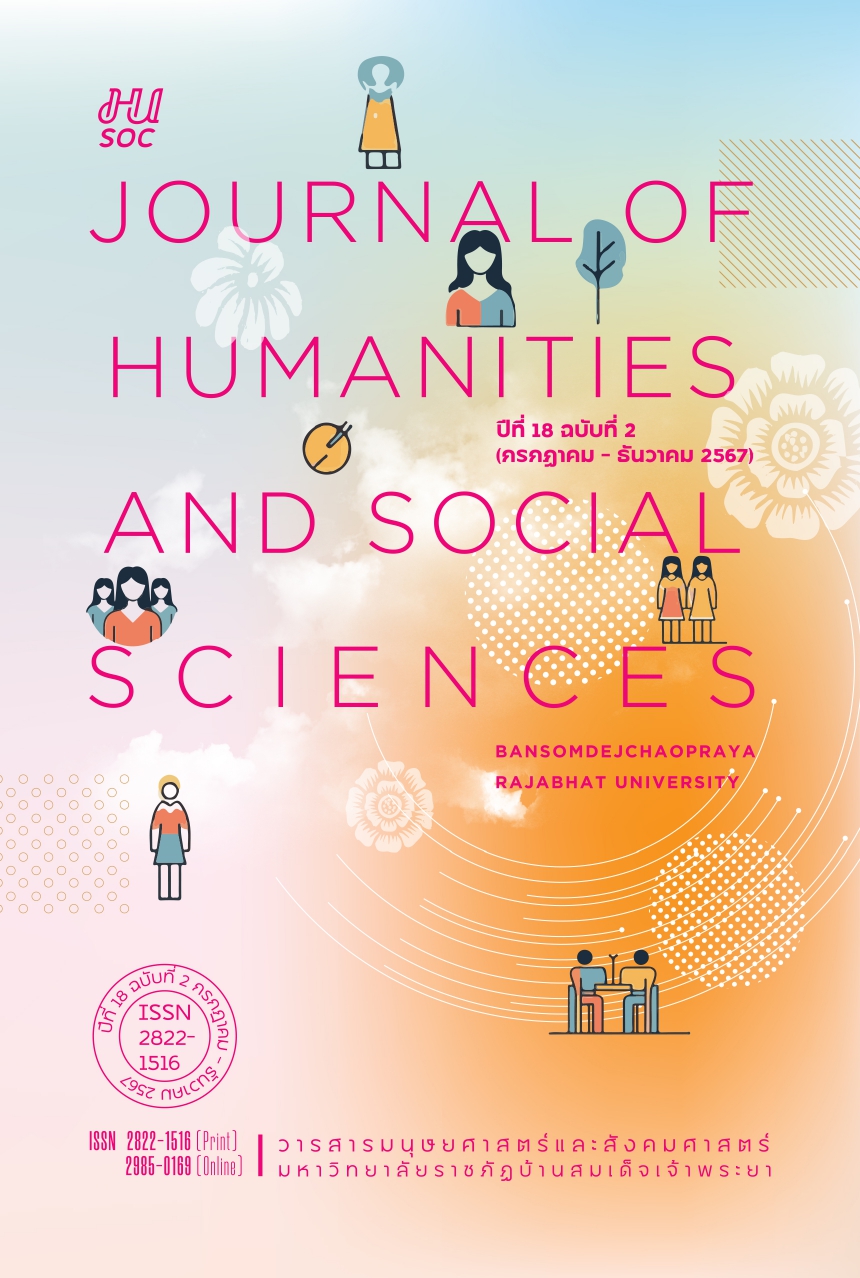Chili Paste: Intangible Cultural Heritage in Thai and Chinese Society
Keywords:
Chili Paste, Folk Wisdom Heritage, Thai – Chinese CultureAbstract
This research article was the analysis of a text in the supplementary book for Chinese students about chili paste, which was registered as an intangible cultural heritage. The objectives were to explore cultural wisdom regarding chili paste in the supplementary book about chili paste registered as an intangible cultural heritage in the context of Thai and Chinese society. The finding showed that chili paste is composed of invaluable nutritious ingredients, all of which were clinically healthful to consumers. As Thai wisdom, Thai people used herbs as ingredients in the recipes as remedies. In the same way, Chinese people had roasted chili paste with much property in nutrition and healing power. It also reflected folk wisdom through the belief that chili paste represented prosperity, eternal love, and protection against bad spirits.
References
Calforlife. (2020). Calorie & Nutrient Database and Food Tracker & Calorie Counter. Retrieved 2 July 2023, https://www.calforlife.com/th
Cao, Y. (2019). The History of Spicy Food in China. Beijing United Publishiing.
Health book editor. (2012). Healthy vegetables. Se-education Public Company Limited.
IVF. CAAS. (2010). Olericulture in China. China Agriculture Press.
Medthai. (2020). Fruits and vegetables: 14 benefits of fruits and vegetables!. Retrieved 9 July 2023. https://medthai.com
Niramon, Y. (2007). Nam Prik: Food resource base, community way of life under globalization. BioThai Foundation. 13-22. [In Thai]
Phornphan, T. (1996). Nam Phrik: The popular Thai food. Silpakorn Journal, 39(1), 83-85.
Satarat, T. (2018). Document teaching on Thai food. Luknam Prints. [In Thai]
Srisamorn, K. (2018). Registered food: national cultural heritage. MP/so.so.so.so. [In Thai]
Srisamorn, K. (2019). Thai Samrub, the identity of taste cultural heritage. MP/so.so.so.so. [In Thai]
Srisamorn, K. (2022). Table food. MP/so.so.so.so. [In Thai]
Su, W. (2023). Supplementary Reading Book: Namprig as a Registered and Intangible Cultural Heritage’ For Chinese Students. Srinakharinwirot University. [In Thai]
Supranee, L. (2013). Project to collect and store information on cultural heritage: topic: Nam Prik. Suphanburi National Library. [In Thai]
Wang, S. X. (2003). Recipe of Suixiju. Tianjin Science and Technology Press.
Wu, B. A. (2014). Chinese Folklore. Changchun Publishing House.
Wu, M. L. (2022). Research on Sichuan-Chongqing Pepper Folk Culture. [Master’s dissertation, Shanxil Normal University, China].
Yang, S. Q. Y., & Ren, Z. Y. (2018). Thai reading (1). World Publishing Corporation.
Yang, X., & Zhao, D. (2021). International communication of Guizhou’s “Laoganma” cultural brand. Journal of Business and Management, 2021(2). 65-68.
Yang, W. X., & Chen, S. F. (2016). Thai for Tourism. Beijing Hope Electronic Press.
Downloads
Published
How to Cite
Issue
Section
License
Copyright (c) 2024 Faculty of Humanities and Social Sciences Bansomdejchaopraya Rajabhat University

This work is licensed under a Creative Commons Attribution-NonCommercial-NoDerivatives 4.0 International License.




